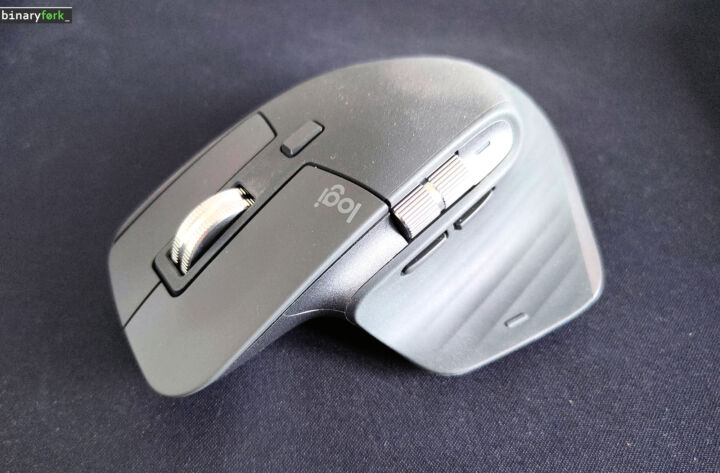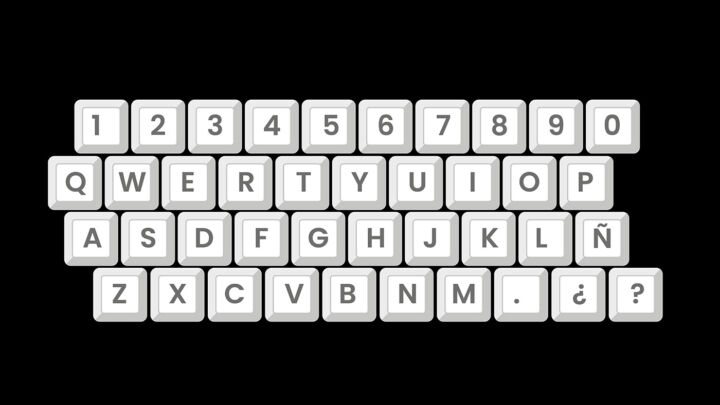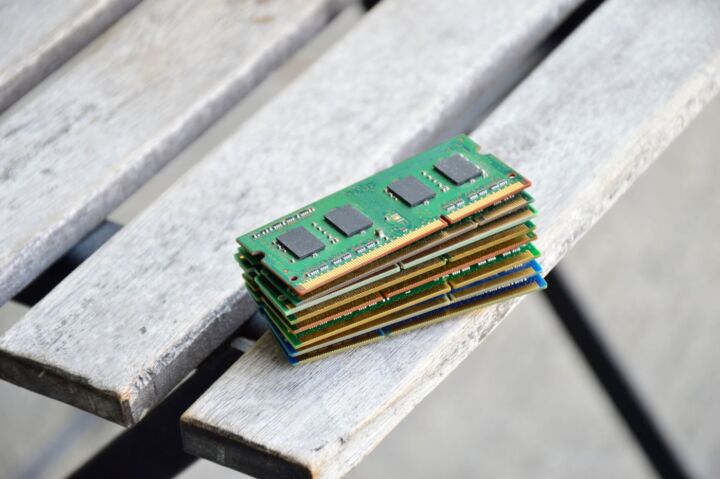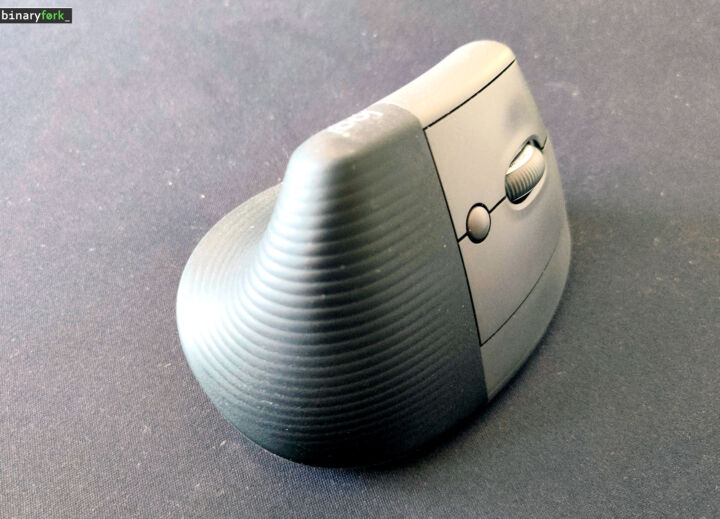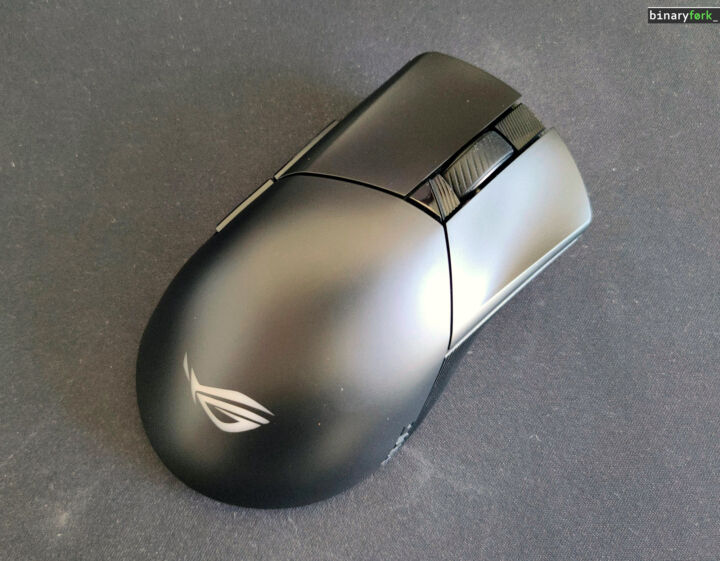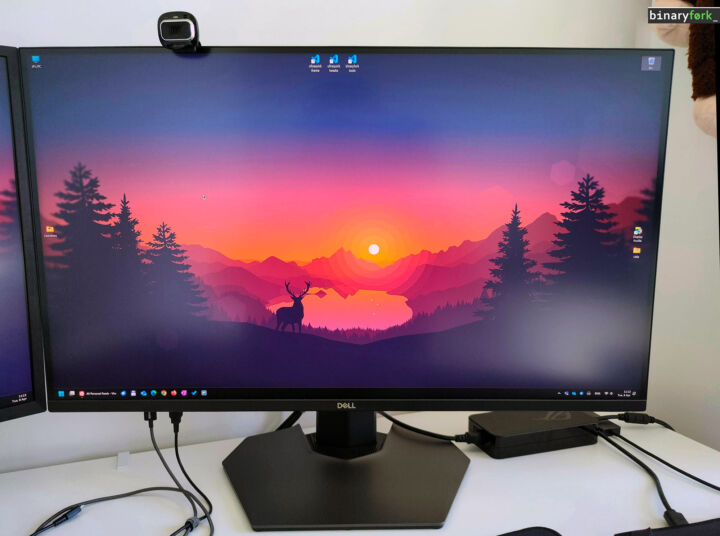- Epomaker P87 is everything I want in a keyboard, and more.
- This keyboard is proof that full aluminum wireless mechanical keyboards can be amazing without costing hundreds of dollars like custom counterparts.
- The boring look may be a turn-off for some people, but for me it’s just another reason to love this keyboard.
- Read along and you’ll find out if the Epomaker P87 TKL aluminum mechanical keyboard is exactly what you need, or if you need to look further.
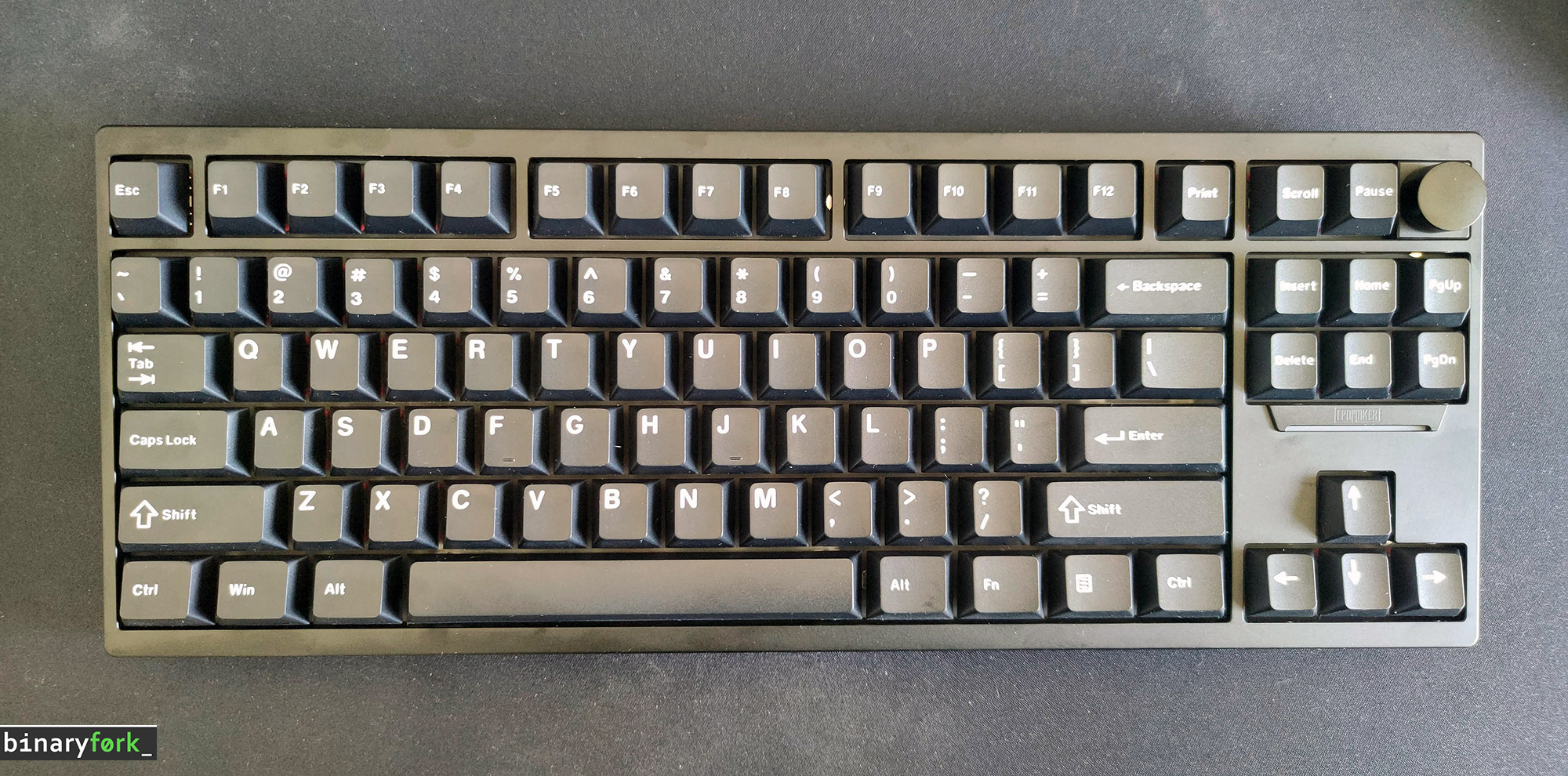
To the despair of my girlfriend, I bought another mechanical keyboard. I now have 4 keyboards. Is this too much? For sure. But I couldn’t let this one pass. It has everything I want in a keyboard: excellent build quality, gasket mount (a bit of a gimmick), hot-swappable layout, some sort of lighting (not really RGB, but I can always set to white), TKL layout, a volume knob, tri-mode connectivity it’s programmable with VIA/QMK, and it looks like a normal keyboard, no weird design choices.
After several days of using the Epomaker P87, I’ve gathered a mix of impressions about its build, performance, and features. This full aluminum TKL keyboard offers a blend of premium construction with a few quirky design choices that set it apart. I’m here to break down everything from its robust construction to its customizable features, VIA/QMK software integration, and even a note on battery life, which honestly surprised me in a good way.
First, let’s see the long list of specs:
| Product name | Epomaker P87 |
| Layout | 80% TKL (Tenkeyless) ANSI US |
| Keys | 87 + rotary knob |
| Typing angle | 6 degrees |
| RGB | Yes, per key RGB, south facing LEDs plus Logo LED |
| Case | Anodized CNC cut aluminum alloy |
| Mounting structure | Gasket mount |
| Software | VIA/QMK firmware, macro support, 4 layers of keys |
| Dampening | 5 layers sound-absorbing materials |
| Connectivity | Bluetooth 5.0, Wired (USB-C to USB-A), Radio 2.4 GHz (with dongle) |
| Polling rate | 1000Hz (USB, 2.4Ghz), 125Hz (Bluetooth 5.0) |
| Battery | 4000 mAh |
| Switches | Zebra linear, hot swappable, PCB is compatible with 3 and 5 pin switches |
| Stabilizers | Plate mounted |
| Keycaps | 1.2 mm double-Shot white on black PBT keycaps, non shine-through, Cherry profile |
| OS support | Windows, Mac, Linux, PS4, PS5, Nintendo Switch |
| Anti-Ghosting | N-Key rollover |
| Weight | 1.82 kg |
| Dimensions | 357x136x45 (back)-23 (front) mm |
| Accessories | USB-C to USB-A braided cable, keycap/switch puller, extra switches, manual |
CONTENTS
Built like a tank, heavy like a tank
The Epomaker P87 boasts a CNC-machined aluminum frame that not only adds durability but also gives the keyboard a premium feel. Weighing over 1.8kg, it has a solid presence on your desk. The anodized finish provides a smooth touch but can be prone to fingerprints – a minor drawback for an otherwise elegant design. Actually, scratch that, it’s kind of a fingerprint magnet. My only hope is to cover it with fingerprints all over, with no untouched surfaces on the case.
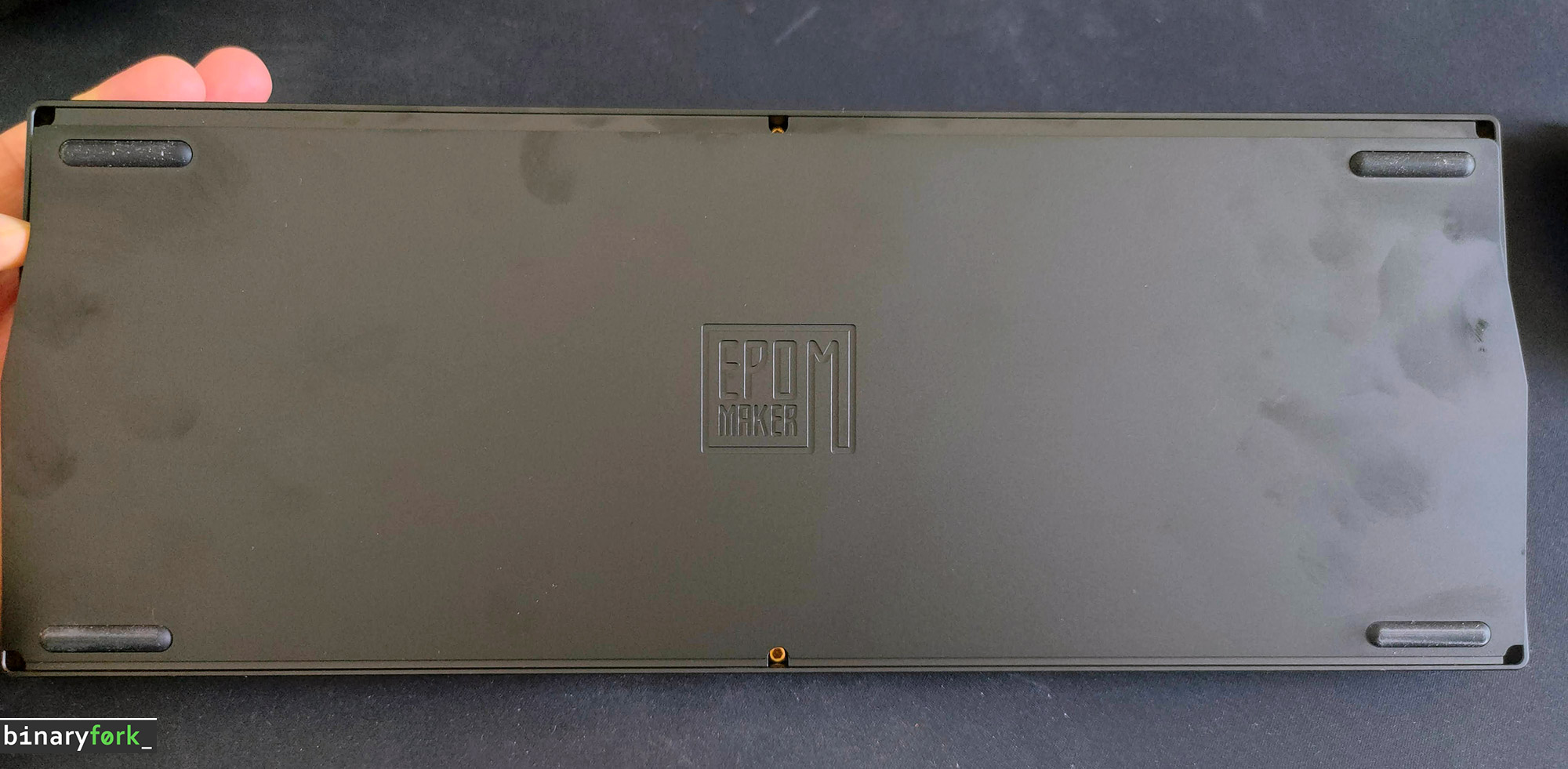
Right out of the box, the most striking thing about the Epomaker P87 is its weight and solid feel, thanks to that full aluminum case. It gives the keyboard a genuinely premium presence on the desk – it doesn’t move an inch, and doesn’t flex no matter no matter how hard you try to bend the case.
The aluminum finish itself looks quite sleek and modern, contributing to an overall high-quality aesthetic that many enthusiasts look for. It definitely feels like a step up from typical plastic keyboard cases.
Aesthetics and layout choices
Design-wise, the P87 sticks to a standard Tenkeyless (TKL) ANSI US layout, which omits the number pad for a more compact footprint, freeing up desk space for mouse movement. If it wasn’t for the knob, it would be a very classic looking keyboard.
I personally appreciate the classic look of the key legends; they are crisp and clear. One interesting design choice is the colour contrast between the keycaps (a dark grey with a subtle blue tint) and the keyboard body – it’s very subtle, but you’ll see that in a well lit room. I think it adds a bit of visual interest without being obvious.
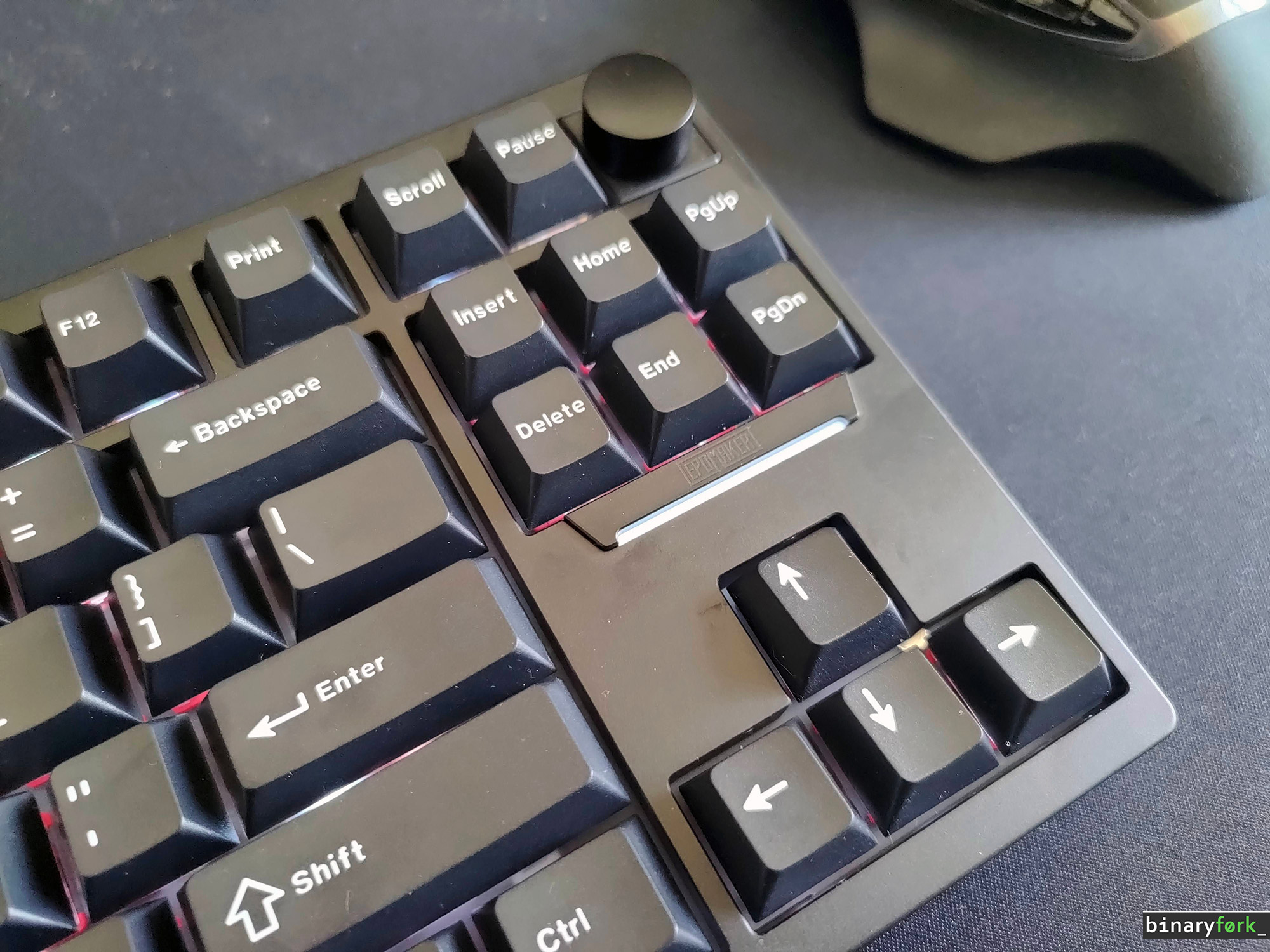
The included keycaps contribute significantly to the overall experience. As mentioned, the legends have a classic, crisp look which I favour. However, on close inspection, the consistency of the legend printing isn’t perfect across all keys, with minor variations visible.
A notable minus for some users will be the lack of shine-through keycaps. This means the Epomaker P87 doesn’t feature per-key RGB backlighting that illuminates the legends themselves, which might be a deal-breaker if you often work or play in dim lighting. For me, this was one feature missing from my checklist.
But I don’t work much at night, plus I have two 32-inch monitors on my desk. When these two are on and the RGB is set to 100% it’s impossible not to see the keys easily.
Looking closer, a few design elements stand out, not always positively. For instance, you can clearly see between the keycaps the screws holding the PCB plate in place. While functional, painting them black would have blended them in better with the case for a cleaner look.
Also, I found the volume knob to be positioned a bit too close to the neighbouring keys, making it slightly hard to grab from the left and bottom with your fingers. I keep bumping into the Page Up key because of this. I didn’t expect that, though it’s still perfectly functional. The knob movements are tactile, meaning you get to feel every notch during the rotation. Pressing on the knob will default to volume mute, but it takes a bit of pushing and the noise that comes together with this action is quite loud.
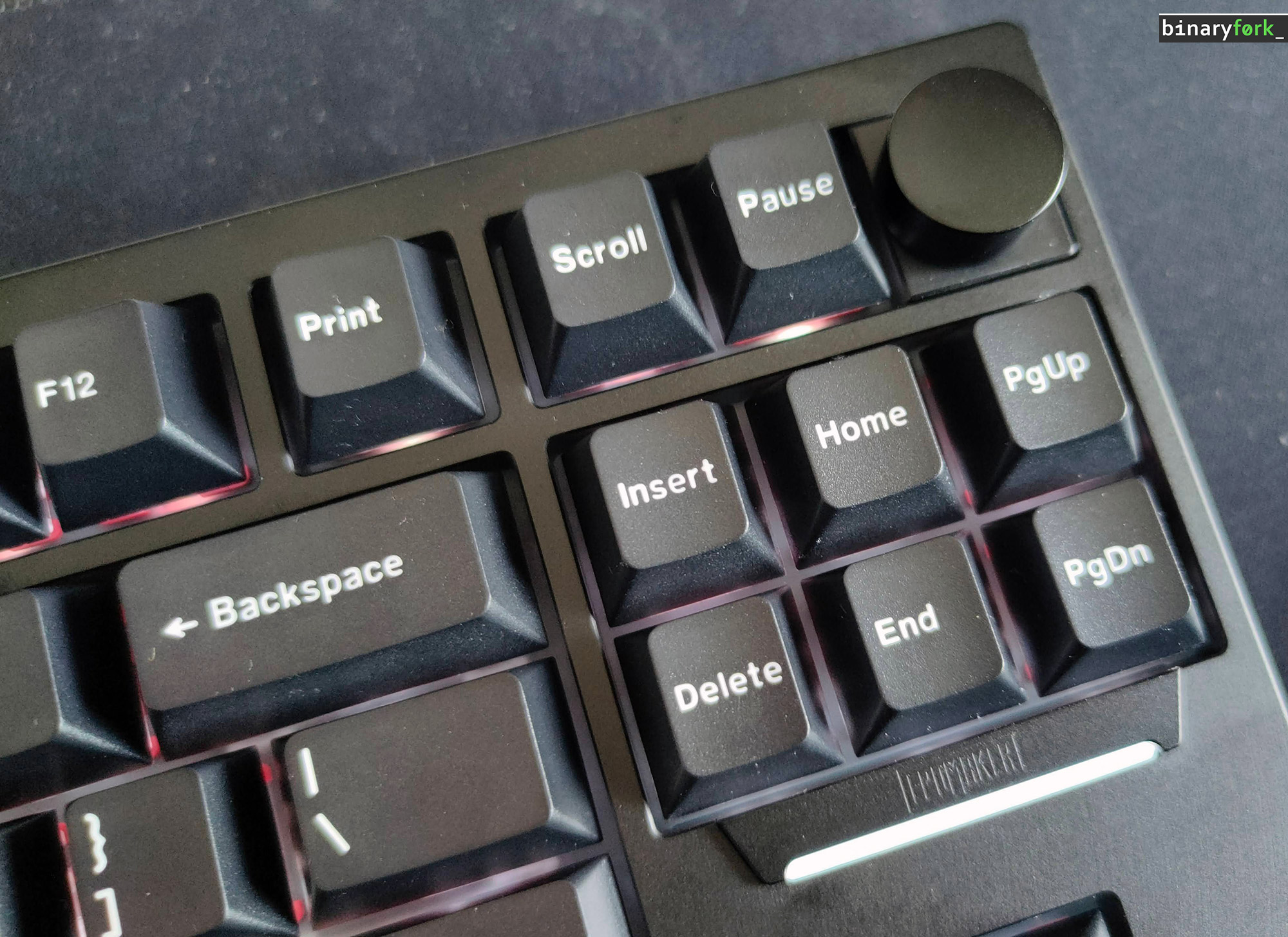
Lastly, while the case finish is nice, be warned – it’s very quite susceptible to fingerprints, so keep a microfiber cloth handy if you like things pristine. I do too, but I don’t like to put in the effort.
Typing feel and sound profile
My version of the P87 came equipped with Zebra linear switches. The typing feel is quite distinct – sharp and direct, which linear switch fans might appreciate. There’s no clear actuation since linears lack a tactile bump, making them potentially good for gaming or fast typing.
Mechanical keyboards are as much about sound as they are about feel, and the P87 definitely makes its presence known. Combined with the aluminum case and the Zebra switches, it produces a sound profile that I, as a mechanical keyboard enthusiast, find quite satisfying – resonant and clear.
However, this isn’t a quiet keyboard. It’s the kind of sound that might not be appreciated by partners, family members, or colleagues in a shared office space, so keep that in mind depending on your environment.
That being said, I was prepared, so the same day I got the keyboard I swapped all switches with a set of GK Gamakay Phoenix v2 linear silent switches. What a difference they make. This is now the most silent keyboard I’ve owned. And I’m including here also membrane keyboards, which are not as bad as people make them to be.
You lose some of the sharp typing response because of the switch dampening, but I’m happy to make the compromise. Listen for yourself
About hot-swappability and manufacturing tolerances
One of the big draws for keyboard enthusiasts is hot-swappability, and the Epomaker P87 includes this feature. This means you can easily change the mechanical switches without any soldering, allowing you to experiment with different switch types (linear, tactile, clicky) to find the perfect feel for you. It’s a fantastic feature for customization and future-proofing your keyboard, making switch maintenance or upgrades a breeze.
I literally swapped all 87 switches in just 15-20 minutes. You could do it faster, I’m sure, but I was just being careful.
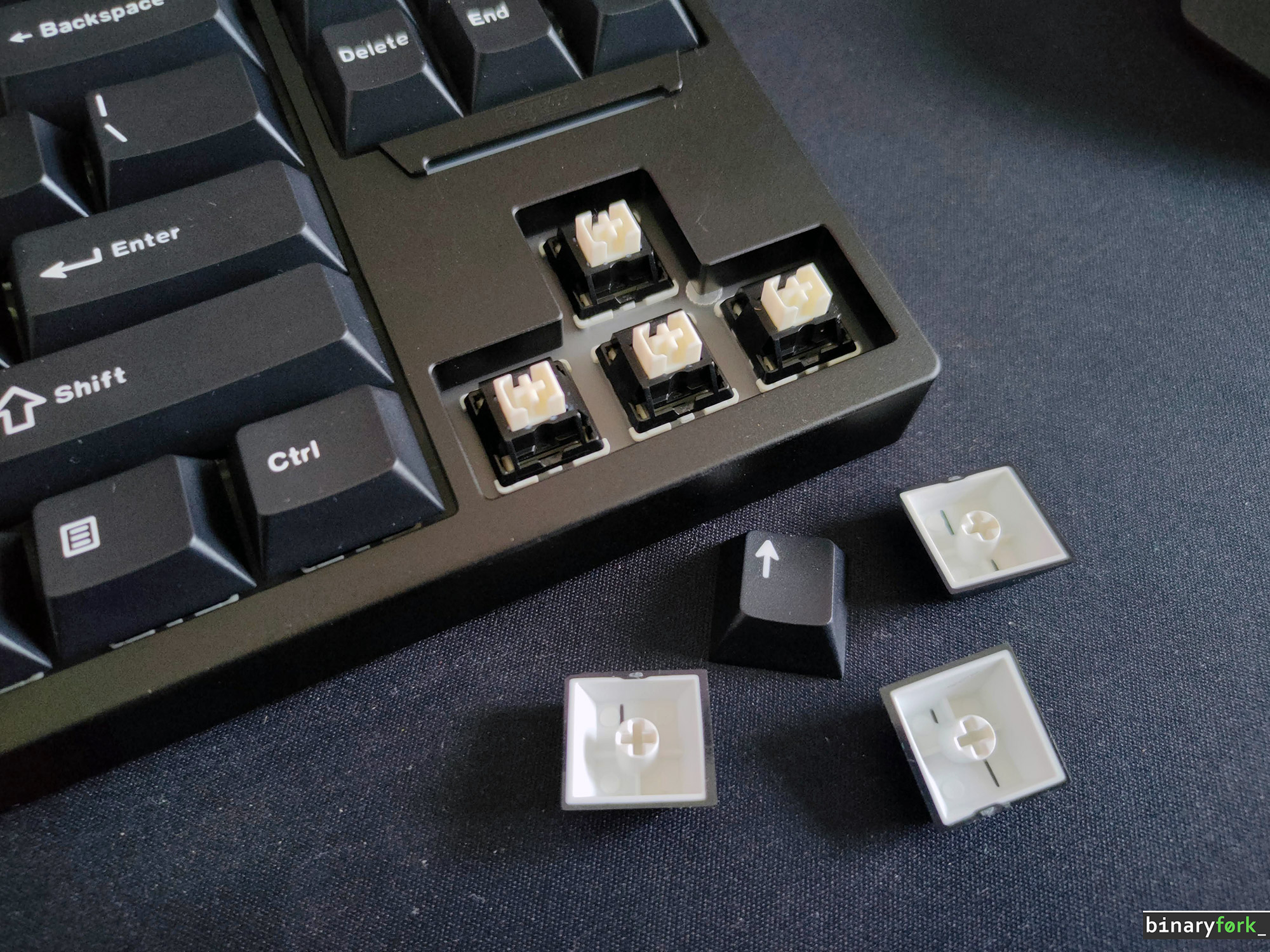
While “testing” the hot-swap functionality, I did encounter some inconsistencies with the sockets on the PCB. A small number of sockets felt looser than others, potentially leading to less secure switch seating or connection issues down the line, though I didn’t experience connection problems myself in the first week of use.
Conversely, some sockets were excessively tight. This resulted in me accidentally pulling out the entire switch along with the keycap quite a few times, leaving behind small broken plastic pieces (from the switch fortunately). This suggests some quality control variance in the socket manufacturing or switches, or both.
All the connectivity options you need
The Epomaker P87 typically offers flexibility in connection, often including both wired (USB-C) and wireless (Bluetooth up to three paired devices and 2.4GHz radio) options. There’s a toggle on the back of the keyboard that lets you switch between 2.4 GHz (left), wired (center), Bluetooth (right). Near this toggle you will find the USB-C charging port and the magnetic housing for the 2.4 radio dongle, which is a very smart way of storing it.
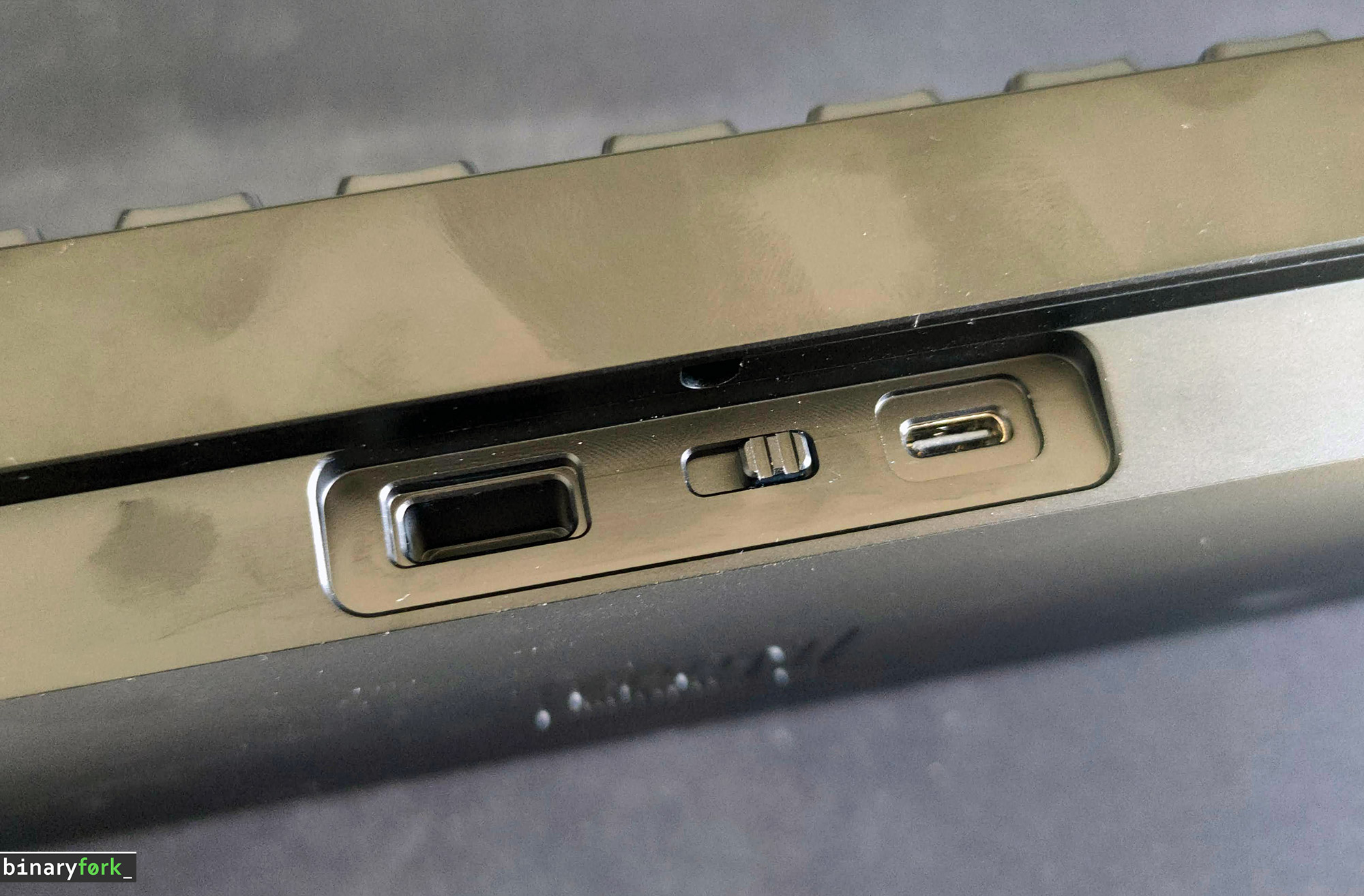
You can charge the keyboard when connected via cable on all positions of the switch, but it will connect via the cable only when the switch is in the correct position. This is OK. The switch toggle has a bit of play, and it’s probably the only thing on this keyboard that doesn’t feel rock solid.
Battery life on wireless models is excellent, often lasting several days to weeks depending on usage and any lighting effects. After a week of use, more than 10-12 hours a day, it still shows a full charge. That’s with RGB off, of course. I think battery life will decrease dramatically with RGB on, even at lower intensity levels. But a week with RGB on should be achievable, which is really nice.
Update: it’s been more than a month now and the battery life is still at 80%. That’s impressive, to say the least. Without RGB you should get at least a few months of use from one charge. I honestly didn’t expect battery life to be this good.
Unleashing the potential with VIA/QMK
For those who love to tinker, the support for VIA and QMK firmware is a massive plus. This open-source software allows for powerful key remapping, macro creation, and function layer customization directly through a user-friendly graphical interface (VIA) or more complex coding (QMK). You can essentially reprogram almost any key to do whatever you want, tailoring the keyboard layout precisely to your workflow or gaming needs.
The best part: VIA works in your browser, no need to install anything. But you do need to download the VIA JSON configuration file from Epomaker’s website. Load it into VIA and off you go customizing stuff. You can easily save your custom configuration files and load them later. The current configuration is saved into the keyboard memory, so it will work on any device without needing to install any software. This is refreshing.
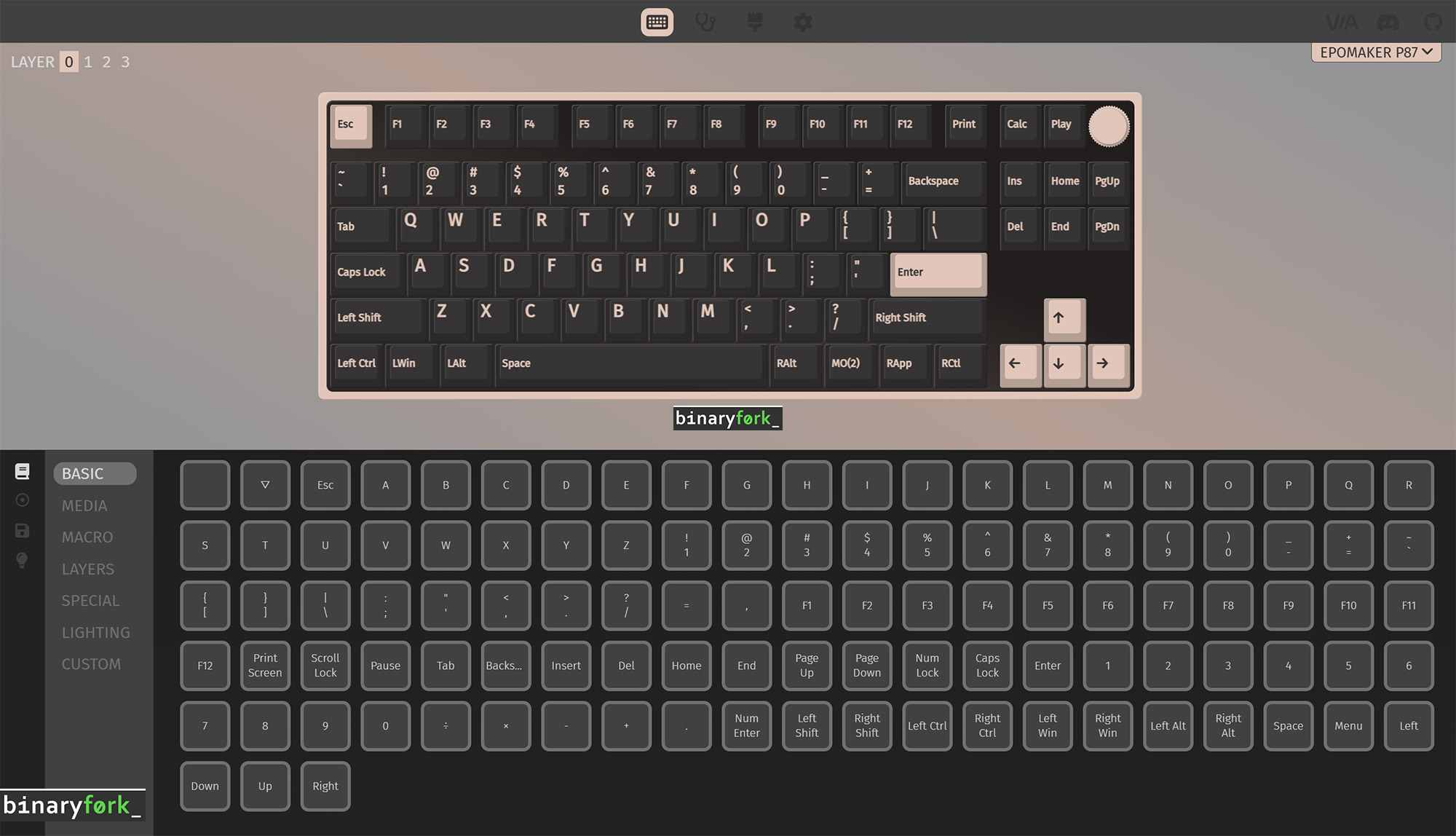
My experience using VIA with the Epomaker P87 was very positive. The software recognised the keyboard immediately, and the interface is relatively intuitive, even for those new to keymap customization. Making changes is straightforward – select a key, choose a new function, and it’s applied instantly without needing to flash new firmware manually. This ease of use makes powerful customization accessible to a broader audience. But for advanced features you should read the manual. Layers are anything but intuitive.
Despite the generally smooth VIA experience, I did encounter a peculiar firmware bug. After triggering a key assigned to a macro, the keyboard sometimes behaved as if the Function (Fn) or Right Alt (rAlt) key was stuck down, interfering with normal typing until I unplugged and replugged the keyboard.
This seems like a software glitch that hopefully could be addressed in a future firmware update, but it was an annoyance during testing, as it happens once a day, maybe slightly less often. Once I removed the macro (it was a combo of three keys that I can easily remember) I had no problems at all.
A note on VIA/QMK: while the keyboard is programmable, you don’t need to install anything and you don’t have to use VIA/QMK. All keyboard functions can be easily controlled from the keyboard itself: RGB, lighting intensity, lighting effects, check the battery level, switch between connections, pair the keyboard with other devices. VIA/QMK just open another level of customizability, including the ability to use macros (press one key and a sequence of keys are automatically executed).
Daily driving the P87 – final thoughts
Coming from smaller 70% or 75% keyboard layouts, readjusting to the standard TKL layout of the P87 took a little bit of muscle memory retraining. The spacing and key positions are more conventional, which is generally a good thing for compatibility and finding keycap sets, but requires a short adaptation period if you’re used to more compact forms. The dedicated TKL cluster and the knob are certainly welcome for productivity.
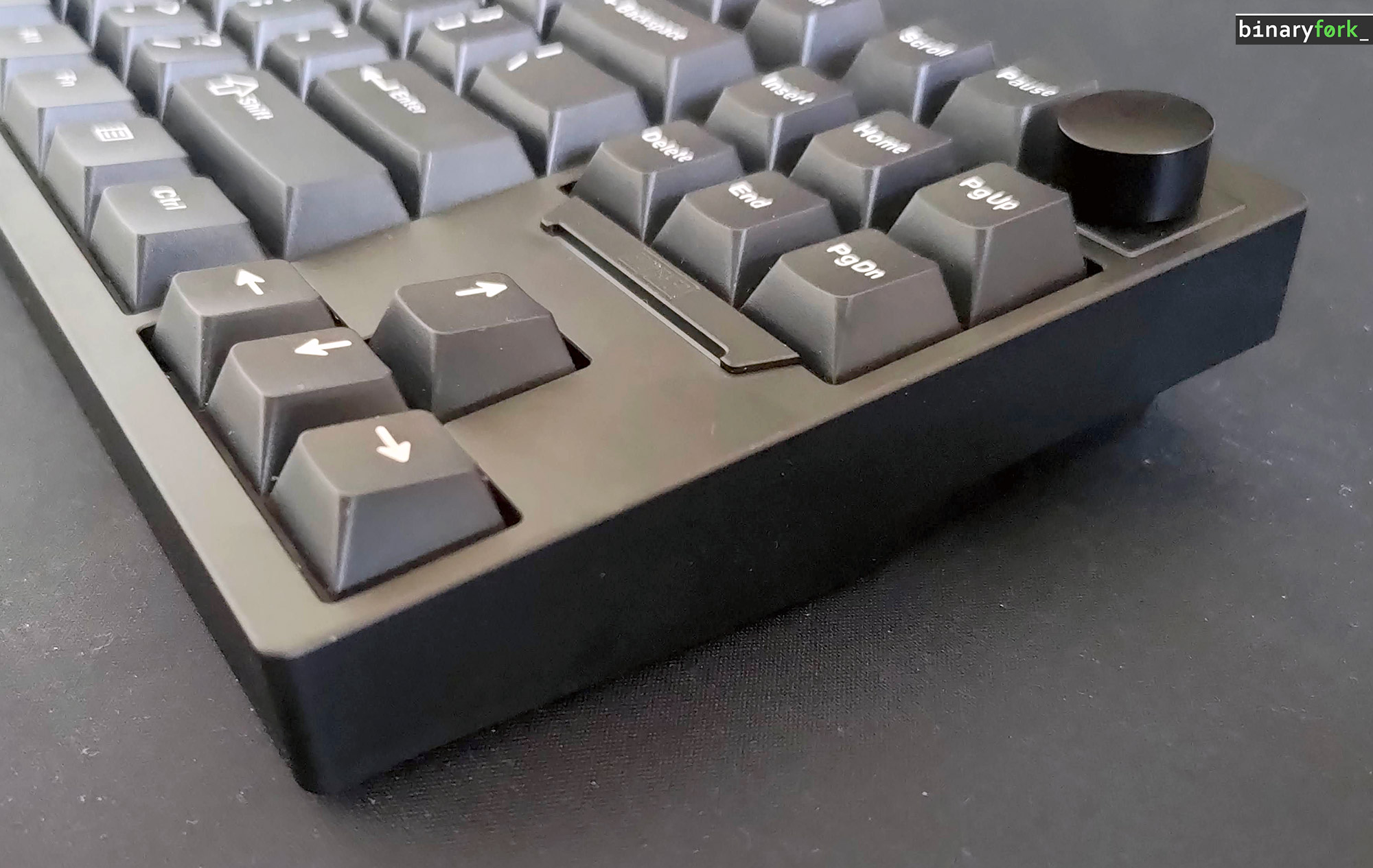
I now have three keys I don’t really have a use for: Pause (I set it to media play/pause), Scroll (which I set to open the Calculator), and Insert, which I left untouched after the macro fiasco. I’ll find a use for it, I’m sure.
Overall, after spending some time with the Epomaker P87, it’s clear that it’s a very capable keyboard offering a premium build and extensive customization features at its price point, which is just a bit above $100. It’s a pity that most manufacturers are focusing on 75% keyboards as there aren’t many TKL options out there. Actually, I know why, because not long ago, I used to love the 75% layout.
For me, the P87 ticks most if not all of the important boxes: solid aluminum construction, hot-swapability, and powerful VIA/QMK support. The main drawbacks were the lack of shine-through keycaps, the slightly awkward volume knob placement, the socket inconsistencies (which you rarely have to deal with), and that odd firmware bug.
This is really an excellent keyboard that will make you happy if you’re in the market for a mechanical keyboard that does it all at an affordable price.
The Epomaker P87 Full Aluminum TKL keyboard is a compelling option for those seeking a premium-feeling mechanical keyboard without venturing into the much higher price brackets of custom builds.
This keyboard would easily have cost $500 two or three years ago, but now it’s a quarter the price. Its solid aluminum construction, satisfying typing experience (if you like the switches), hot-swap capability, and fantastic VIA/QMK support are major strengths, so if you prioritize build quality, want an 80% TKL layout, and can live with its very specific drawbacks (I’m nitpicking a bit here), the Epomaker P87 is definitely worth considering.
What are your thoughts on the Epomaker P87? Would you get one? What mods would you do first? I swapped the switches, which made a big difference, and now I’m thinking of adding a few white keycaps to make it stand out more.
Let me know in the comments below, and feel free to share this review on social media if you found it helpful!
